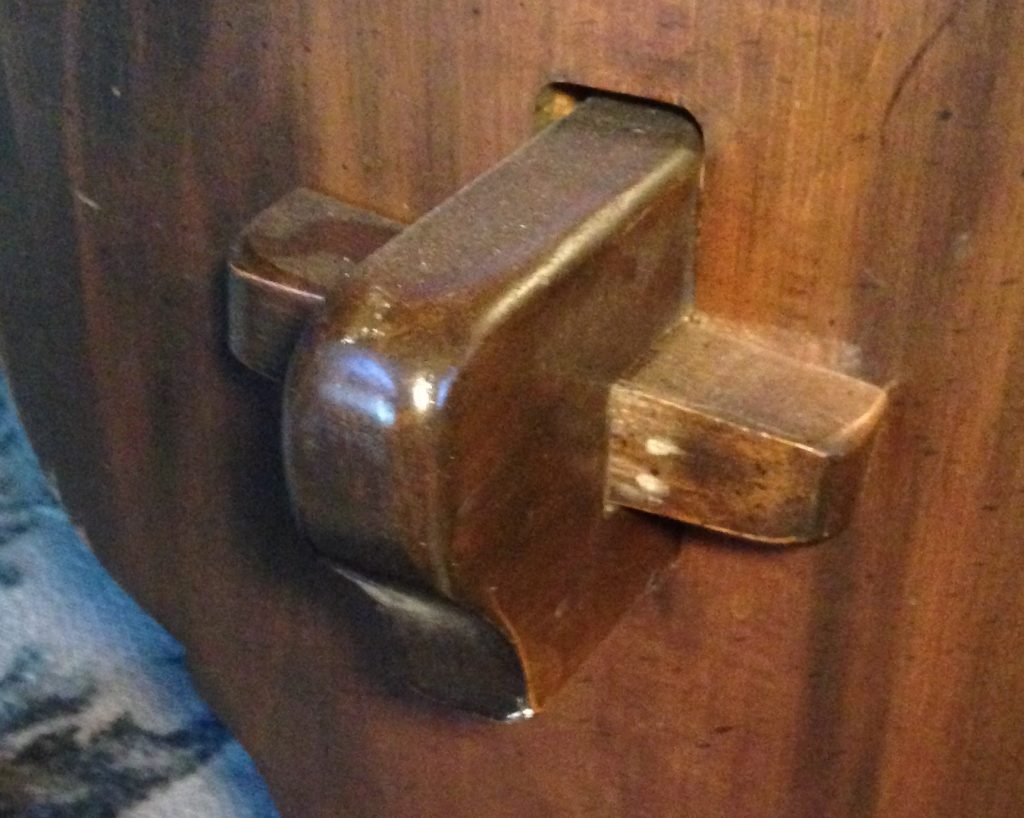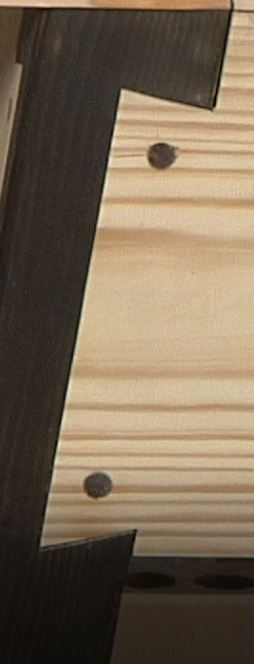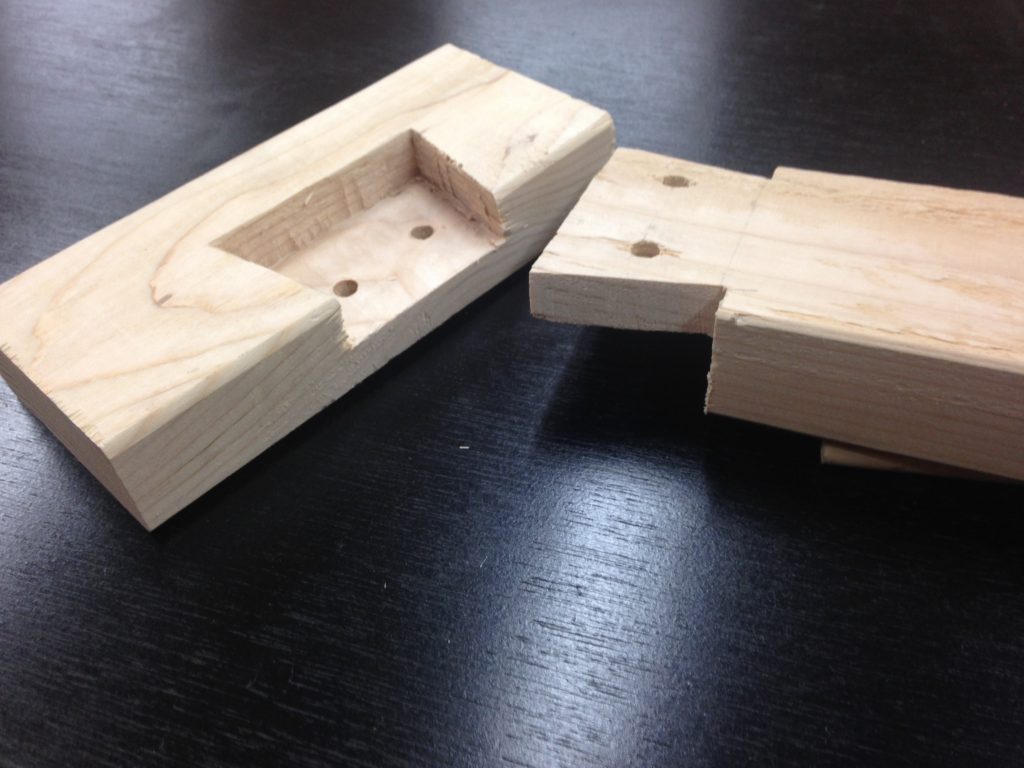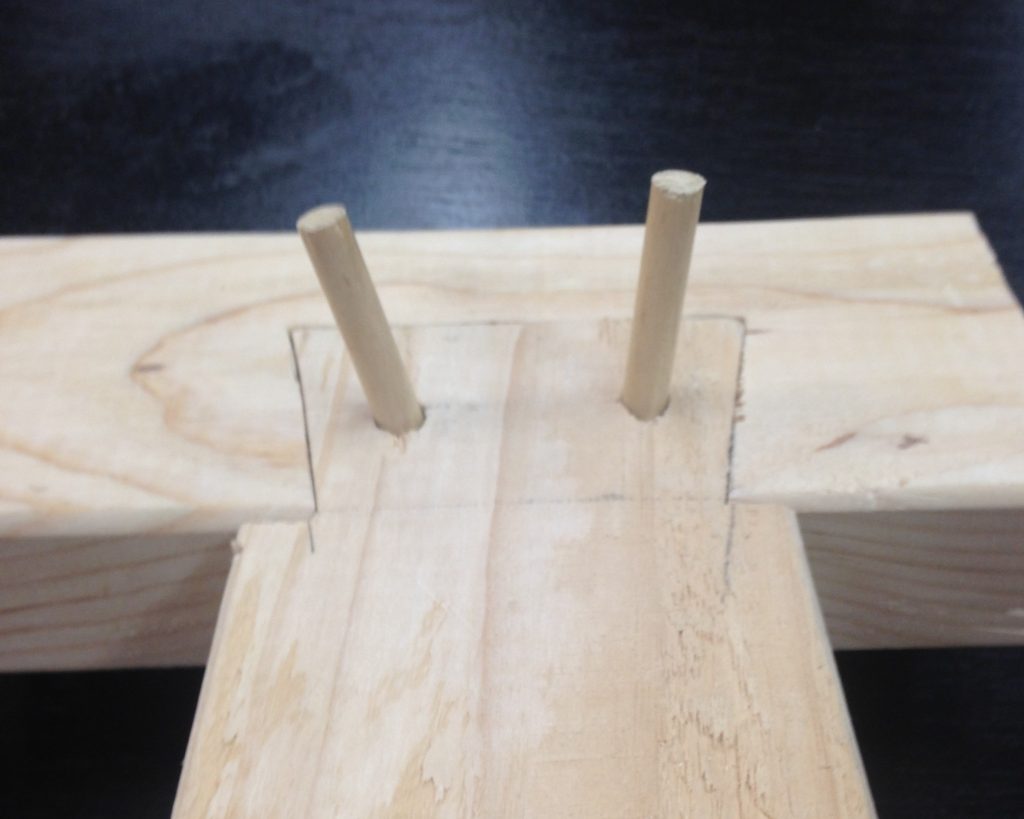Recently I needed to build a workbench for my shop. Actually, I needed two for my shop. I decided this was a good opportunity for teaching a beginner how to make a simple workbench out of some 2×4 and 4×4.
Watch Beginner Woodworking Bench Video Here
I also wanted to push my own limits and do a bench that is a bit more complex in construction. I wanted something that could knockdown and be stored away easily transported. I wanted to set it up in various places for classes and demos.

A lot of traditional benches have this ability and use a tusk tenon on the lower rail. By tapping the wedge out, that allows it to be disassembled. However, the constant pushing back and forth on a bench and the seasonal movement of the wood causes this wedge to come loose. A simple solution is to just tap the wedge with a mallet. But I just thought there might be a better way than using the wedge tenon method.

Thinking about joinery I know that the dovetail is a tried and true method to lock mating pieces together. The dovetail allows the pieces to side together in one direction and prevents it from pulling out another direction.
Now with the aprons and rails being 1 ½” thick, that’s a lot of material to remove to make the dovetail fit together. But by doing only half the thickness i can still create a locking dovetail joint but with less labor involved. Hence, combining a classic half lap joint with a dovetail joint, will give me a half lap dovetail !

Now I still have a problem. As i stated before, the dovetail allows the pieces to side together in one direction. So the joint won’t come part in the direction of the length of the bench, but my pulling on it the width of the bench, the joint can slide out. Today’s modern glue would be the simple answer in keeping it in place for the rest of its life. But as i stated, i wanted it to be knockdown, and the glue would defeat that ability. So the answer is, dowel pins.

I realize that simply drilling and placing dowel pins in it without adding glue just gives me the same problem; it can be pulled apart. So the secret to the answer is to angle the dowel pins. By drilling opposing angles thought the half lap dovetail, when the pins will be inserted it will cause a wedging action. Thereby, pulling on it only causes the wedging of the pins in the half lapped joint to become tighter.
Now merely driving the pins in or out with a mallet, I am able to have a knockdown bench that can be completely disassembled and reassembled whenever needed.
As far is it not coming loose with movement like that of the tusk tenon design, …well, time will tell.
Keep on Dancin’
Chad Stanton

